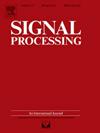Separable and high-capacity reversible data hiding for encrypted 3D mesh models based on dual multi-MSB predictions
IF 3.4
2区 工程技术
Q2 ENGINEERING, ELECTRICAL & ELECTRONIC
引用次数: 0
Abstract
Three-dimensional (3D) models, essential for building virtual worlds, are encountering growing challenges in privacy and copyright protection as their usage increases. Reversible data hiding (RDH) in encrypted 3D mesh models not only protects the privacy of the original models through encryption but also embeds additional data for covert communication or access control. This paper proposes a high-capacity, separable RDH method for encrypted 3D models. The approach utilizes integer mapping and incorporates an enhanced dual multiple most significant bit (multi-MSB) prediction strategy to maximize embedding capacity. First, each vertex coordinate is scaled to a decimal value within a predefined range. These values are then encoded into binary digits using integer mapping, with the number of digits determined by a compression threshold. Subsequently, all vertices are processed to identify redundant data that served as embedding room using a multi-MSB self-prediction algorithm, significantly increasing the embedding capacity. Next, after disregarding the redundancy in the MSBs of each vertex, the vertices are classified into an embeddable set and a reference set. The embeddable vertices are then further processed to create additional embedding room through secondary multi-MSB prediction. The auxiliary data, compressed using arithmetic coding, is embedded into the multi-MSB of each encrypted vertex, resulting in encrypted vertices that contain both the auxiliary data and available embedding room. Using the auxiliary data, encrypted additional data is embedded into the reserved embedding room within the multi-MSB of each vertex through bit substitution. Finally, the embedded data can be extracted without errors, and the original 3D mesh can be recovered losslessly. The experimental results demonstrate that the proposed method is highly effective, achieving superior embedding capacity compared to several state-of-the-art methods.
基于双重多msb预测的加密三维网格模型的可分离和大容量可逆数据隐藏
三维模型对于构建虚拟世界至关重要,随着其使用的增加,在隐私和版权保护方面面临着越来越大的挑战。加密三维网格模型中的可逆数据隐藏(RDH)不仅可以通过加密保护原始模型的隐私,还可以嵌入额外的数据用于隐蔽通信或访问控制。提出了一种用于加密三维模型的大容量、可分离RDH方法。该方法利用整数映射和增强的双多重最高有效位(multi-MSB)预测策略来最大化嵌入容量。首先,将每个顶点坐标缩放为预定义范围内的十进制值。然后使用整数映射将这些值编码为二进制数字,位数由压缩阈值决定。随后,利用多msb自预测算法对所有顶点进行处理,识别作为嵌入空间的冗余数据,显著提高了嵌入容量。然后,在忽略每个顶点的msb中的冗余后,将顶点分类为可嵌入集和参考集。然后对可嵌入顶点进行进一步处理,通过二次多msb预测创建额外的嵌入空间。使用算术编码压缩的辅助数据被嵌入到每个加密顶点的multi-MSB中,从而得到既包含辅助数据又包含可用嵌入空间的加密顶点。利用辅助数据,通过位替换将加密的附加数据嵌入到每个顶点的multi-MSB内的预留嵌入室中。最后,对嵌入数据进行无误差提取,无损恢复原始三维网格。实验结果表明,与现有的几种方法相比,该方法具有较高的嵌入能力。
本文章由计算机程序翻译,如有差异,请以英文原文为准。
求助全文
约1分钟内获得全文
求助全文
来源期刊

Signal Processing
工程技术-工程:电子与电气
CiteScore
9.20
自引率
9.10%
发文量
309
审稿时长
41 days
期刊介绍:
Signal Processing incorporates all aspects of the theory and practice of signal processing. It features original research work, tutorial and review articles, and accounts of practical developments. It is intended for a rapid dissemination of knowledge and experience to engineers and scientists working in the research, development or practical application of signal processing.
Subject areas covered by the journal include: Signal Theory; Stochastic Processes; Detection and Estimation; Spectral Analysis; Filtering; Signal Processing Systems; Software Developments; Image Processing; Pattern Recognition; Optical Signal Processing; Digital Signal Processing; Multi-dimensional Signal Processing; Communication Signal Processing; Biomedical Signal Processing; Geophysical and Astrophysical Signal Processing; Earth Resources Signal Processing; Acoustic and Vibration Signal Processing; Data Processing; Remote Sensing; Signal Processing Technology; Radar Signal Processing; Sonar Signal Processing; Industrial Applications; New Applications.
 求助内容:
求助内容: 应助结果提醒方式:
应助结果提醒方式:


